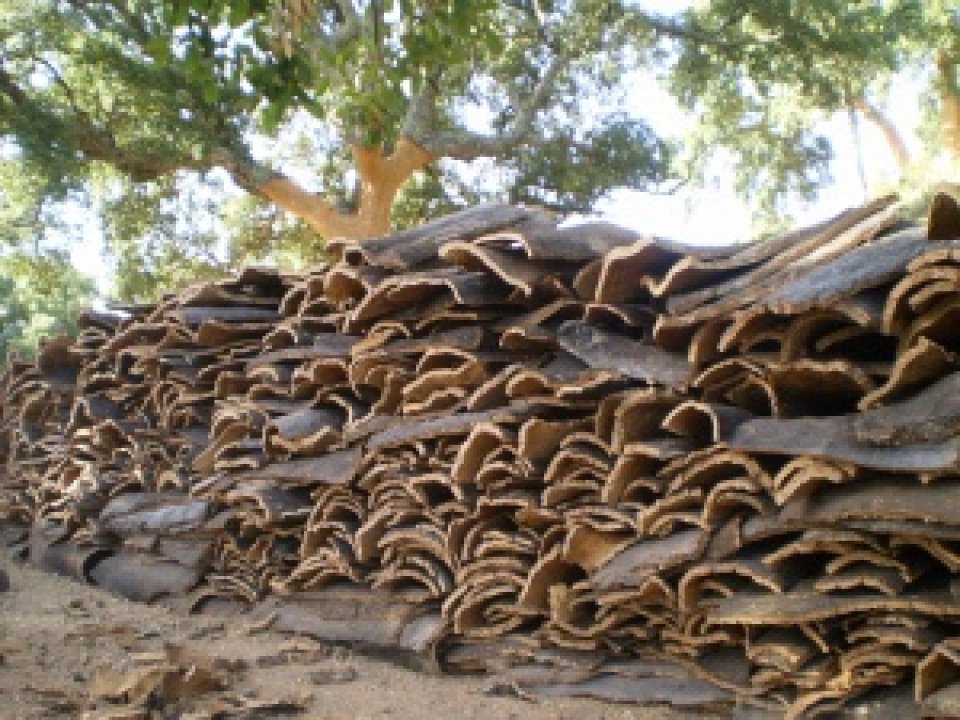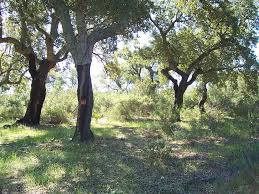
This document presents the methodology used by the Extremadura Scientific and Technological Research Centre (CICYTEX) for assessing the quality of piled cork. Once the cork has been stripped from the trees, the planks are arranged in ‘piles’ prior to transportation to the factory. Assessing the cork in these piles is particularly useful in forests with difficult access, where direct assessment on the tree is not viable.
Cork is highly prized for its characteristics. It is light, elastic, insulating, natural and renewable. It is a highly heterogeneous material, which complicates classification into the most suitable uses for each piece. The assignation of uses is determined by the quality of the cork. This analysis is very important since the price of cork varies enormously according to its final use. Cork can be sold either on the tree or in piles once debarked. There are several methods to estimate the quality of the cork in a pile (del Pozo Barrón et al. 2000a). The method presented is that developed by CICIYTEX to evaluate the quality of piled cork.
Cork can be sold either standing or in a pile after debarking. ‘Piles’ are cork plank formations, which are arranged in an orderly manner so that the cork remains in a good condition until it can be transported to the factory. To estimate the quality of the cork in a pile, CICYTEX uses stratified sampling. Cork planks are selected and 20x20 cm representative samples are taken. These samples are processed (dried, boiled, trimmed) and prepared in order to evaluate their quality. The quality will depend on the calliper of the samples and their appearance. By combining calliper and appearance, the overall quality of the planks is determined, grouping them into cork quality classes or types (from 1 to 9) according to the CICYTEX classification (Plan de Calas 2020).
To estimate the number of samples, in addition to the total volume of the pile, the volume corresponding to the crown and interior of the pile is taken into account. Thus, deviations are avoided in piles where the best planks are located on the outside and poorer quality planks are hidden inside. Crown sampling is systematic and the starting point for sampling is randomly selected. Due to the complexity of systematic or random sampling inside the pile, it is possible to perform two-stage sampling (from Pozo Barrón et al. 2000b): (i) a certain number of blocks are selected (2 <n <6) for sampling a volume of 1 m3; (ii) blocks are systematically selected from the chosen origin, above or below an imaginary line halfway up the pile.
Estimating cork quality in piles is recommended in cases where the orography of the terrain makes it difficult to estimate the quality of the standing cork. The method described is relatively simple to implement, although the extraction of some planks can be difficult due to the weight of those above them. The difficulty lies in the calculations to be made (del Pozo Barrón et al. 2000b). When working with a reasonable number of samples, the relative errors are 15% (90% confidence). In addition, it is a highly efficient system which avoids completely dismantling the pile while eliminating the mistakes that can arise in superficial analyses.
Evaluating cork quality, either standing or in a pile, is key to this sector. Cork quality is directly related to the final use of the cork. Depending on whether it is used in one product or another, the price of cork varies considerably. In countries like Spain and Portugal, the evaluation of cork quality is common practice, although this is not the case in other cork-producing areas. The future development of these methodologies depends on their implementation and adaptation in other areas such as Italy, France and North Africa. In this regard, CICYTEX has developed a piled-cork evaluation methodology for application in Tunisia.
Ramón Santiago Beltrán, ramon.santiago@juntaex.es
José Luis del Pozo Barrón
Further information
Plan de calas 2020. Plan de estimación de calidad de corcho en campo. Metodología de trabajo. CENTRO DE INVESTIGACIONES CIENTÍFICAS Y TECNOLÓGICAS DE EXTREMADURA (CICYTEX). Junta de Extremadura. http://cicytex.juntaex.es/es/centros/icmc/servicios/2/plan-de-calas
DEL POZO, J. L., BERNAL, C., CARDILLO, E., GARCÍA, M., GONZÁLEZ, J., & SANTIAGO, R. (2000a). Manual didáctico del sacador y del obrero especializado en los trabajos culturales del alcornocal. Proyecto Leosuber. Consejería de Educación Ciencia y Tecnología. Junta de Extremadura.
Del Pozo Barrón, J.L.; Díaz Gallego, A.; Santiago Beltrán, R.; Vasco Jiménez, A. 2000b. Análisis de la calidad del corcho en Marruecos a través de un nuevo sistema de muestreo de corcho apilado. CONGRESSO MUNDIAL DO SOBREIRO E DA CORTIÇA. Lisboa, 19-21 de Julho de 2000.
(c) CICYTEX

Cork oak stand. (c) CICYTEX
